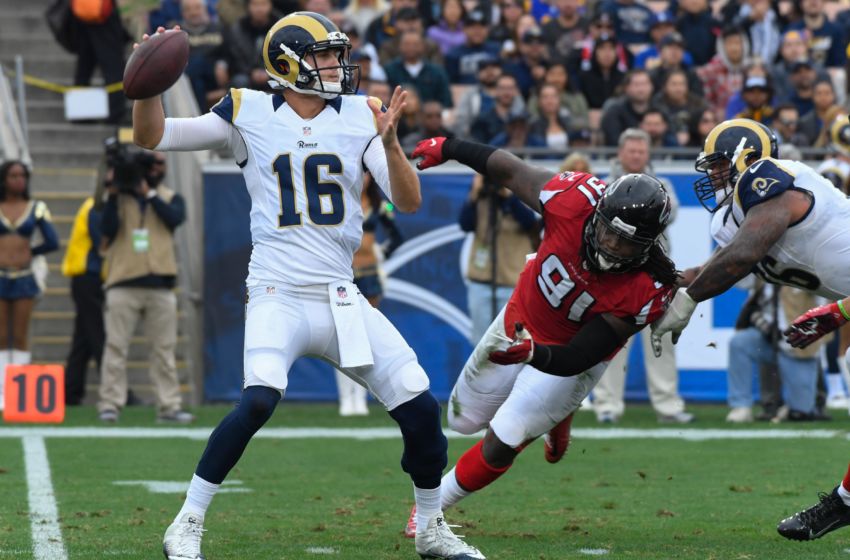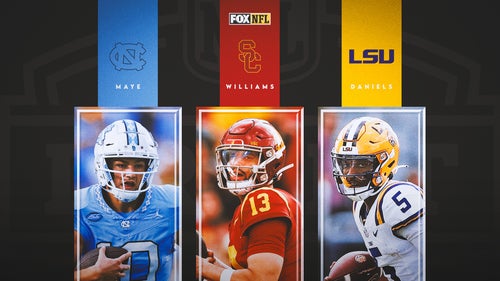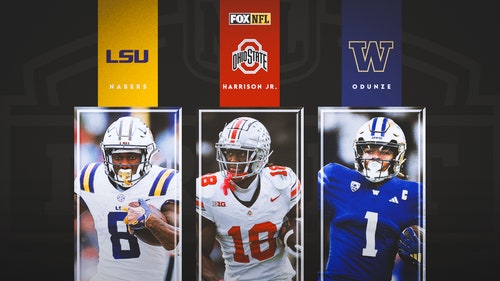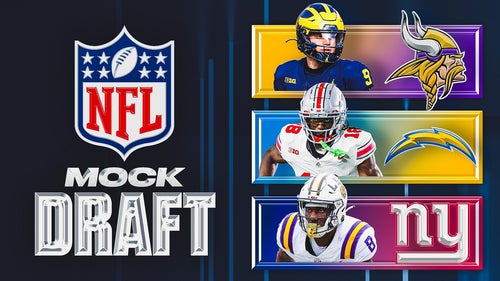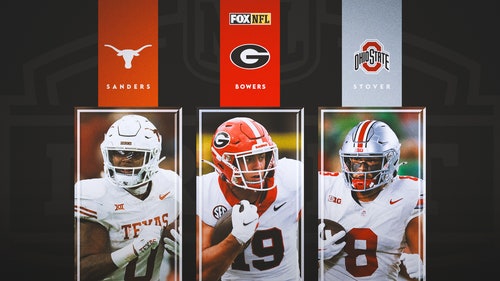
How the Cleveland Browns can beat the draft quarterback market
Dec 3, 2016; Orlando, FL, USA; Clemson Tigers quarterback Deshaun Watson (4) throws the ball in the second half against the Virginia Tech Hokies during the ACC Championship college football game at Camping World Stadium. Clemson Tigers won 42-35. Mandatory Credit: Logan Bowles-USA TODAY Sports
The Cleveland Browns have the first overall pick. Do they take a quarterback? Find out how the Browns can beat the quarterback market in the 2017 Draft.
The Cleveland Browns earned the first overall pick in the 2017 NFL by their abysmal, yet ever improving, play during the 2016 NFL season. Now that the draft, a Browns fan’s real Super Bowl, is back on the radar, it is time to begin the endless debate about who should be taken when by the Browns.
Of relevance, this (and every) off-season is the question of quarterback. The Browns find themselves in the familiar position of needing to draft a quarterback that will bring stability to the position.
However, this year’s quarterback class has drawn mixed reviews. The “Big 3” quarterbacks – Notre Dame’s DeShone Kizer, North Carolina’s Mitch Trubisky and Clemson’s DeShaun Watson – have analysts divided as to who is the best draft prospect and who, if any, can eventually become a franchise quarterback.
The lack of consensus leads to wild speculation and vastly different opinions about how the Browns should proceed with the No. 1 overall pick. But hey, isn’t that the fun of being a Browns fan during draft season? Fans get to have these discussions with friends and family. Some years, draft season is the only time Browns fans can be optimistic about their team.
A popular argument among fans states that the current quarterbacks in the draft are not worth the first overall pick. This argument contains an undefined concept that guides its meaning. The undefined concept is “worth” or value.
The entire argument hinges on the worth of quarterbacks and draft picks, but does little to define how worth is determined. In what follows, we will examine the concept of “worth” to determine if and how the value of a pick or quarterback can be determined.
In the end, the article will help Browns fans have a more informed discussion about drafting NFL prospects in the draft.
Sep 17, 2016; South Bend, IN, USA; Notre Dame Fighting Irish quarterback DeShone Kizer (14) throws the ball over Michigan State Spartans defensive lineman Raequan Williams (99) during the second half a game at Notre Dame Stadium. Mandatory Credit: Mike Carter-USA TODAY Sports
The ongoing argument about this year’s quarterback class states that none of the quarterbacks in the draft are “worth” the first overall pick. Implied in the argument is there is an objective and determinable value placed on the first overall pick. By the standard of that value, the quarterback in question is not worth that value.
Thus, when saying “Mitch Trubisky is not worth the first overall pick,” what is meant is that the worth of the first overall pick exceeds the worth Trubisky would bring in terms of draft value.
browns
NFL Mocks 23hNFL Draft Order Set Through Pick 28 with Conference Championships Set
More headlines around FanSided:
4d - 2017 NFL Mock Draft: Three Full Rounds of Mayhem1 w - Browns Hire ex-Rams DC Gregg Williams To Same Position1 w - 2017 NFL Mock Draft: New Regimes Create New Problems2w - 2017 NFL Mock Draft: Top Quarterbacks Start Their Rise3w - 2017 NFL Mock Draft 1.0: Defense Dominates in First RoundMore News at Dawg Pound Daily
At the heart of the argument is the need to correlate the objective worth of the pick to the worth of the player taken with said pick. The argument rests on the worth of the pick as its guiding standard. The subjective judgement concerning the worth of Trubisky bears the burden of correlating to the objective standard.
Determining the objective value of a pick is not all that difficult. There are plenty of point charts available online that assign a numerical value to each pick. The most famous point chart is the one used by former Dallas Cowboys head coach Jimmy Johnson. You can find a copy of the chart here.
The original purpose of the chart was to help determine a value for picks in trades to ensure a fair trade or to gain an advantage. Although intended for that purpose, its usefulness exceeds its original function. One of the many ways it can be used is to determine draft capital and the worth a team receives in return for that capital.
For example, the Browns own the first overall pick. Per Johnson’s chart, it is worth 3,000 points. The objective for the Browns (for this argument) would be to find a player worth 3,000 draft points.
The worth of a player must, by necessity, be determined and mathematized into a corresponding number on the draft value chart. For example, Mel Kiper’s recent big board at ESPN ranks Trubisky as the 16th overall prospect. If these rankings are slotted into pick values, then Trubisky’s value would be 1,000 points.
Thus, using the first overall pick valued at 3,000 points on a player whose draft value has been determined to be 1,000 points would be a waste of 2,000 draft value points, or the equivalent of the fourth overall pick in the draft.
Thus, a team must conclude that Trubisky is not worth the first overall pick. Of course, all values in this argument are based on Johnson’s chart and Kiper’s rankings.
When the pick value matches the value of the player then the market is efficient. But the market has proven itself inefficient when it comes to quarterbacks. But why is that?
In the 2016 NFL Draft, the Tennessee Titans traded the first overall pick, its fourth-round pick (No. 113) and its sixth-round pick (No. 177) to the Los Angeles Rams in exchange for the 15th overall pick, two second-round picks (Nos. 43 and 45) and a third-round pick (No. 76) in 2016. In addition, the Titans acquired the Rams first-round pick in 2017 which turned out to be the fifth overall pick.
In terms of Johnson’s pick value chart, the Titans traded 3,088.6 draft points for 3,880 draft points from the Rams. The point difference is 791.4, or roughly the equivalent of the 21st overall pick in the NFL draft.
The Rams decided to part with the equivalent of the 21st overall pick in the draft to move from 15th overall to first overall in the 2016.
More from Dawg Pound Daily
Why would a team overspend that much draft capital to move up in the draft? The answer is obvious: to draft what they believed to be a franchise quarterback.
The need for a franchise quarterback in the NFL cannot be overstated. Every year, virtually the same teams are vying for the Super Bowl. Why? Because they have a quarterback who can lead the offense and inspire confidence in the rest of the team.
In short, they are franchise quarterbacks.
The value a franchise quarterback brings to a team cannot be measured. In fact, given the impact these quarterbacks have on a team, it seems reasonable that any amount of draft capital is a fair trade for a genuine franchise quarterback.
This brings us to the second argument Browns fans make about drafting a quarterback. It runs as follows: If you believe that a player, for example Trubisky, is a franchise quarterback then no price is too high. The value he brings to the team is worth every bit of the price paid to acquire him.
The difficulty of this approach is twofold.
First, the premise of the argument is based on an unjustifiable belief. It is simply impossible to determine if a quarterback is a franchise quarterback before he is drafted. There are key performance and personality indicators that can help, but in the end the draft remains a gamble. Thus, any trade up the draft board is based on an unjustified belief that a player is truly a franchise quarterback.
Second, the power of belief knows no limits. If a team truly believes (without justification) that our example player Trubisky is a franchise quarterback, then that team will overpay the value of the pick necessary to acquire him.
For example, if a team sits at the 10th overall pick and believes Trubisky is a franchise quarterback, then that team, per this argument, should be willing pay any price to move up to the pick necessary to take him. In short, no price is too high for someone a team truly believes (unjustifiably) is a franchise quarterback.
Thus, a market inefficiency at quarterback is created. It only takes one team to “fall in love” with a quarterback to overpay for a pick and inflate the entire market.
In the end, the worth of players and picks are not determined by a pick value chart or a player ranking. Instead, worth is determined by the market and the market is determined by an unjustified belief that a player is truly a franchise quarterback.
The smart teams play this market to their advantage.
Jan 1, 2017; Pittsburgh, PA, USA; Cleveland Browns owner Jimmy Haslam (left) talks with executive vice president of football operations Sashi Brown and head coach Hue Jackson before the game between the Pittsburgh Steelers and the Cleveland Browns at Heinz Field. Mandatory Credit: Ken Blaze-USA TODAY Sports
To determine if drafting a quarterback first overall beats the market, we must first ask if the market can be played in reverse. Can a team whose slot is the first overall pick, like the Cleveland Browns, beat the quarterback market by over-drafting a player?
In years past, the quarterback market has been set by a team willing to trade up from a lower pick to a higher pick to draft a quarterback. In this scenario, a quarterback was valued by the team in question to be a franchise quarterback. Thus, the cost to the team to take him was inconsequential.
In 2016 the cost to move up from the 15th pick was 791.4 points, or the 21st overall pick. If the Browns wanted to play the market in reverse, they would need to over-draft a player by less than 800 draft value points to beat the price used to acquire the first overall pick.
Per the Johnson chart and Kiper’s current rankings, if the Browns drafted the highest ranked quarterback, who is Tribusky at 16th overall (1,000 points), with the first overall pick (3,000 points), they would expend an excess of 2,000 draft points or the third overall pick.
In a reverse market, the Browns would have paid 2,000 draft points to draft Trubisky. This is a significant price even compared to what the Rams paid to move up to the first pick in 2016 (791.4).
But could the Browns absorb the 2,000-point draft expense with the capital gained from their trade with the Philadelphia Eagles and Tennessee Titans last season? Let’s find out.
Nov 6, 2016; East Rutherford, NJ, USA; Philadelphia Eagles quarterback Carson Wentz (11) throws a pass against the New York Giants during the second quarter at MetLife Stadium. Mandatory Credit: Brad Penner-USA TODAY Sports
The Browns could use the draft capital gained from the trades with the Eagles and Titans to cover the cost of drafting Trubisky first overall.
The Browns traded the second overall pick (2,600 points) in 2016 and a fourth-round pick (112 points) in 2017 to the Eagles for the 8th overall pick (1,400 points), a third-round pick (205 points) and a fourth-round pick (100 points) in the 2016 draft. In addition, they received the Eagles first-round pick in 2017 (1,200 points) and their second-round pick in 2018 (estimated value of 430 points). The net gain in draft capital from this trade was 623 draft points, or the 30th overall pick.
The Browns then sent the 8th overall pick (1,400 points) and a sixth-round pick (21 points) in the 2016 for the 15th overall pick (1,050 points) and the third-round pick (210 points) in 2016. In addition, the Browns received the Titans 2017 second round pick (400 points) in 2017. This trade gained the Browns a net value of 239 draft points, or the equivalent of the 70th overall pick in the draft.
The gain from both trades was a total of 862 excess draft points, or the equivalent of the 19th overall pick in the draft.
Could this excess draft capital gains be used to offset the loss the Browns would incur by over-drafting Kiper’s highest-rated quarterback first overall?
Sep 24, 2016; Chapel Hill, NC, USA; North Carolina Tar Heels quarterback Mitch Trubisky (10) passes the ball during the first quarter against the Pittsburgh Panthers at Kenan Memorial Stadium. Mandatory Credit: Jeremy Brevard-USA TODAY Sports
Any way this is sliced up, using reverse draft capital or reverse over-paying is extremely expensive. Over drafting a player first overall comes at an extreme cost to draft capital. If the Browns drafted the 16th overall ranked player first in the draft, they would lose 2,000 draft points. That number is significantly higher than the draft capital gained in both of last year’s draft trades (862 points).
Except the Rams paid 3,880 draft points for the first overall pick valued at 3,000. They then used that pick on a player ranked on Kiper’s 2016 final big board to be the 5th overall player whose draft value was 1,700 points.
The reverse draft capital used by the Rams to take Goff was 1,300 points. Adding the 880 points used to acquire the pick to the 1,300-point loss in the actual selection, means the Rams used 2,180 points of draft capital to acquire the first overall pick and draft the 5th overall ranked player.
Using the Rams 2,180 draft capital points as the basis of the quarterback market, for the Browns to beat the quarterback market from 2016 they would need to take a loss on less than 2,180 draft capital points to draft a quarterback. Per Johnson’s chart, to beat the quarterback market from last year, the Browns can draft a quarterback first overall who is ranked as low as 21st overall on Kiper’s big board.
The top-ranked quarterback on Kiper’s board is Trubisky at 16th overall. The Browns would expend a draft capital of 2,000 points to draft him first overall. This would beat the quarterback market as set by the Rams in 2016 by 180 draft points, or the 82nd (mid-third round) pick of the draft.
The Browns would beat the quarterback market set by the Rams, but would they beat the price the Eagles paid for the second overall pick?
The Eagles expended an excess of 623 draft capital points to acquire the Browns second overall pick. Once they acquired the pick, they used it to acquire the 7th overall ranked player on Kiper’s final 2016 draft board. The Eagles used 1,100 points of reverse draft capital to pick a quarterback.
Combining the price to acquire the pick combined with the loss of capital while making the selection, the Eagles used a combined 1,723 excess capital to acquire their quarterback.
For the Browns to beat the Eagles market price for acquiring a quarterback they need to draft a quarterback under the 1,723 net draft capital loss. However, the Browns pick value must be adjusted for the Eagles use of the 2nd overall pick compared to the first.
If the Browns started with the second overall pick they would lose an excess of 1,600 draft capital points to draft the highest ranked quarterback, per Johnson’s chart. In that scenario, the Browns would beat the quarterback market set by the Eagles in 2016 by 123 draft points, or a late third round pick.
By playing the draft market in reverse and calculating the market value of quarterbacks using reverse draft capital, the Browns can select Trubisky with the first overall pick of the 2017 NFL Draft and still beat the 2016 NFL Draft quarterback market by an estimated late third-round draft pick.
Hopefully executive vice president of football operations Sashi Brown paid attention during math class at Harvard.






































































































































